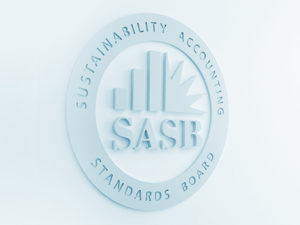How and why SASB is working towards enhanced disclosure on pricing strategies.

In 2016, drug pricing emerged as a headline risk for the pharmaceuticals industry. Several cases demonstrated how pricing policies could negatively impact value and provoke regulatory scrutiny. For example, concern over pricing policies contributed to an 87 percent decrease in Valeant’s stock price, representing a loss of $85 billion in market value from its 2015 peak. In October, Mylan was forced to pay $465 million to settle allegations that it overcharged Medicaid for its EpiPen. Meanwhile, the industry suffered considerable reputational damage, as the issue became a bipartisan rallying cry.
Several companies have responded to stakeholder scrutiny and pressure by pledging to limit price increases or by enhancing disclosure of price increases. Both Allergan and Novo Nordisk announced that they would no longer raise individual drug prices by more than 10 percent within a year. In January, Merck released a ‘Pricing Action Transparency Report’, and J&J plans to release a similar report later this month. Although these actions indicate a trend towards enhanced management and disclosure, reporting on this issue remains inconsistent and limited. Companies throughout the industry acknowledge the importance of the issue in the Risk Factors and Management Discussion and Analysis sections of their annual SEC filings. However, few provide data on price increases that is decision-useful and indicative of performance.
SASB’s provisional standard for the pharmaceuticals industry includes metrics on Affordability and Fair Pricing that are intended to enhance disclosure and to provide investors with meaningful information. As written, these standards encourage companies to disclose a ratio of weighted average rate of net price increases (for all products) to the annual increase in the U.S. Consumer Price Index. However, during the consultation period, numerous stakeholders have suggested revising the metric to include a more detailed view of price increases for individual products rather than the whole portfolio. Accordingly, SASB is proposing to revise the metrics to read as follows: list of drug by disease category for which price increased by more than 10 percent, including percentage increase.
SASB is currently consulting with issuers and investors to get feedback on this and other proposed changes to the standards. As SASB works to codify these standards, input from stakeholders on this issue will be critical, and comments can be directed to [email protected]. Feedback will help to ensure that the Affordability and Fair Pricing metrics, and the ensuing disclosure, provide decision-useful information to capital markets.
Eric Kane is SASB’s Health Care sector analyst.
